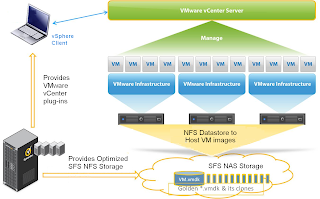Six ways to use virtualization in your small business

Virsualization brings hard nut to crack technologies which are not comprehensive for all enterprises besides few giant of them. Virtualization consists of scores of benefits for trivial businesses, including cost savings and IT efficiency. And options such as Orable’s
VirtualBox (www.virtualbox.org) and VMare Workstation
(www.vmware.com/products/workstation)
have put the technology within reach of small business budgets. Here are some
suggestions for how you can leverage the power of virtualization in your small
business.
Replace an old or unsupported machine
It happens often enough: The developer of an niche software
that you’re using goes out of business, or the software in no long supported.
The original installation files are nowhere to be found, and you aren't sure of
the configuration settings anyway. Rather than spending money to replace a
perfectly working app, or keeping your fingers crossed hoping the machine
running it will last a couple more years, why not just virtualize the entire
PC? That’s easy enough using software such as the free VMare vCenter Converter
(www.vmware.com/products/converter).
This allows you to continue using the unsupported software on any desktop or
laptop with sufficient RAM and a decent processor, albeit in a virtualized
environment.
Obviously, running unsupported software is never desirable
from a security perspective. Be sure to only run virtual machines (VMs)
containing such apps behind a firewall.

Create a system backup
Using the same method outlined above, you can make a
“snapshot” of a server into a VM as a system backup. A VM backup can help your
business quickly get up to speed after a catastrophic hardware failure. While a
VM copy is no substitution for daily data backups (you will need the data
backups to restore your server), having a recent image handy can keep business
downtime to a minimum and buy you time to acquire and configure new physical
hardware.

Provide Internal Services
Are you looking to setup a Wiki for internal use or testing
out a Jabber IM deployment within the company internet? In such scenarios,
virtualization makes it easy for businesses to setup an environment without
cluttering up existing machines or having to purchase new hardware. If the
initial deployment or trial is successful, the VM can be easily moved onto a
dedicated virtual server machine or quickly expanded simply by tweaking VM
parameters such as RAM and CPU allocation.

Support Mobility
Mobile devices have allowed business users to work from
virtually anywhere, but there are times when an employee will need to access a
PC-only app from the road or use a desktop browser for websites that won’ load
properly on a mobile one. Fortunately, Remote Desktop Protocol-clients for iOS,
Android, and Windows RT enable users to connect to their office workstations in
this situation. Rather having employees connect directly to their desktops, set
up a VM to server as the RDP host, making sure to configure only the services
that they need. Keeping work machines segregated this way adds an extra layer
of security.

Enhance security
The prevalence of cyber attacks targeting Web browsers puts
your business data at increased risk. An easy, inexpensive way to combat it is
to limit Web browsing activities to a virtual environment that has no access to
sensitive files. Should a hacker break through the Web browser, a quick restart
will conveniently erase any malware or modified system files (assuming the VM
was started in read only mode).

Distribute apps without having to install them
Apps can also be packaged and distributed a VM image. This
is a great method for transporting your favorite apps on a flash drive between
home and work, and is also a way to ensure that your software demo will not
fail due to missing drivers and code libraries. Finally, this tactic can also
be used to run multiple instances of an application such as Yahoo Messenger and
Skype, with different instances mapped to different accounts.



.jpg)
.jpg)
1 comments:
Post a Comment